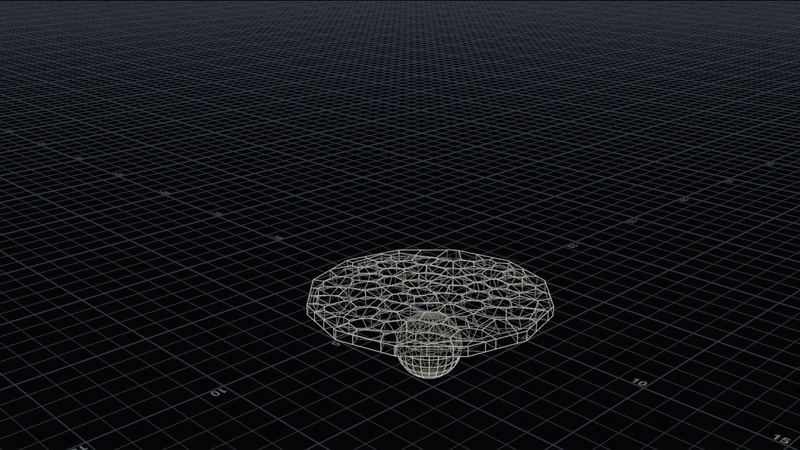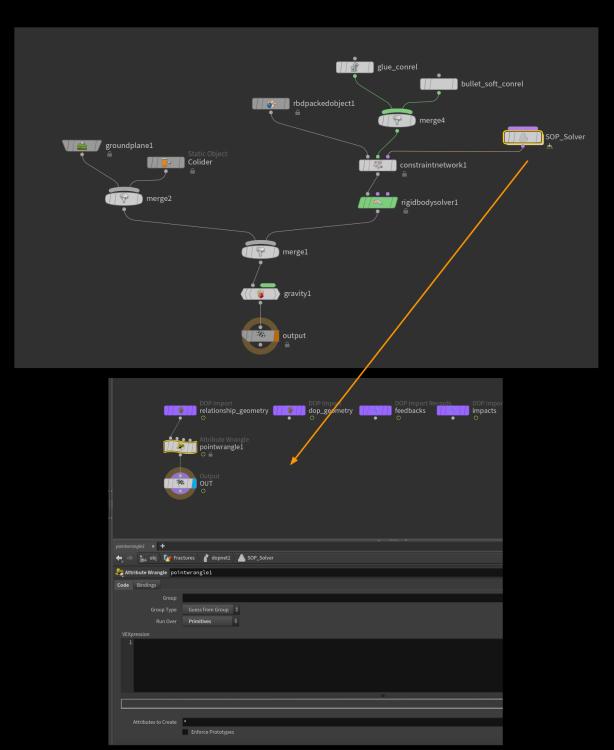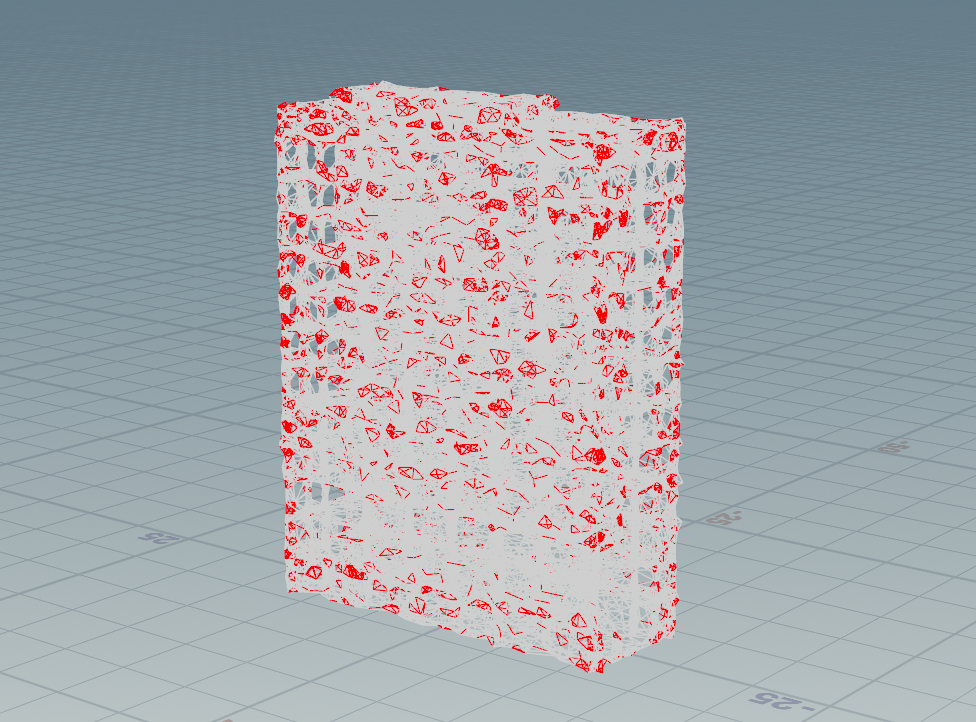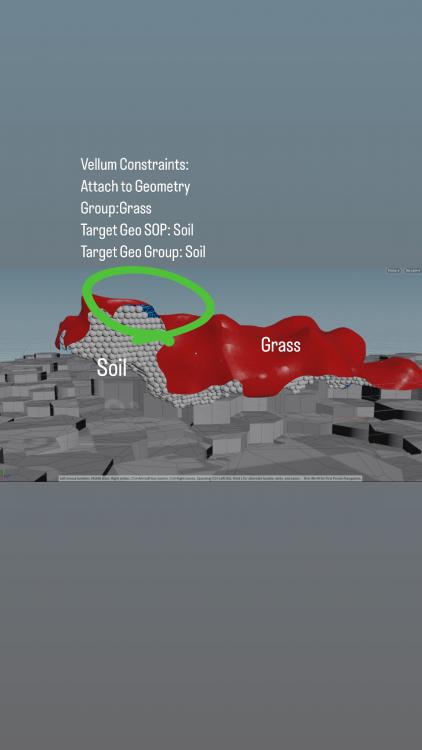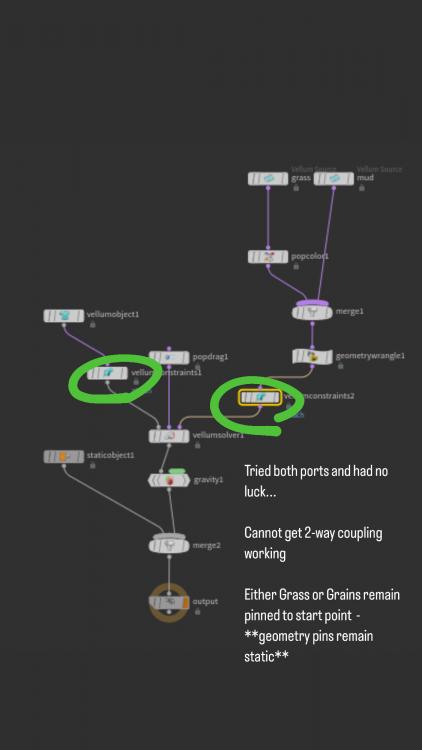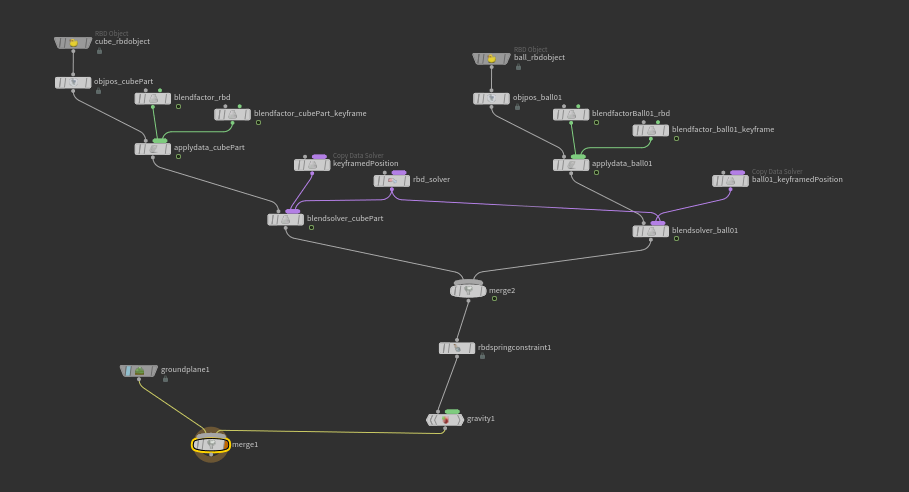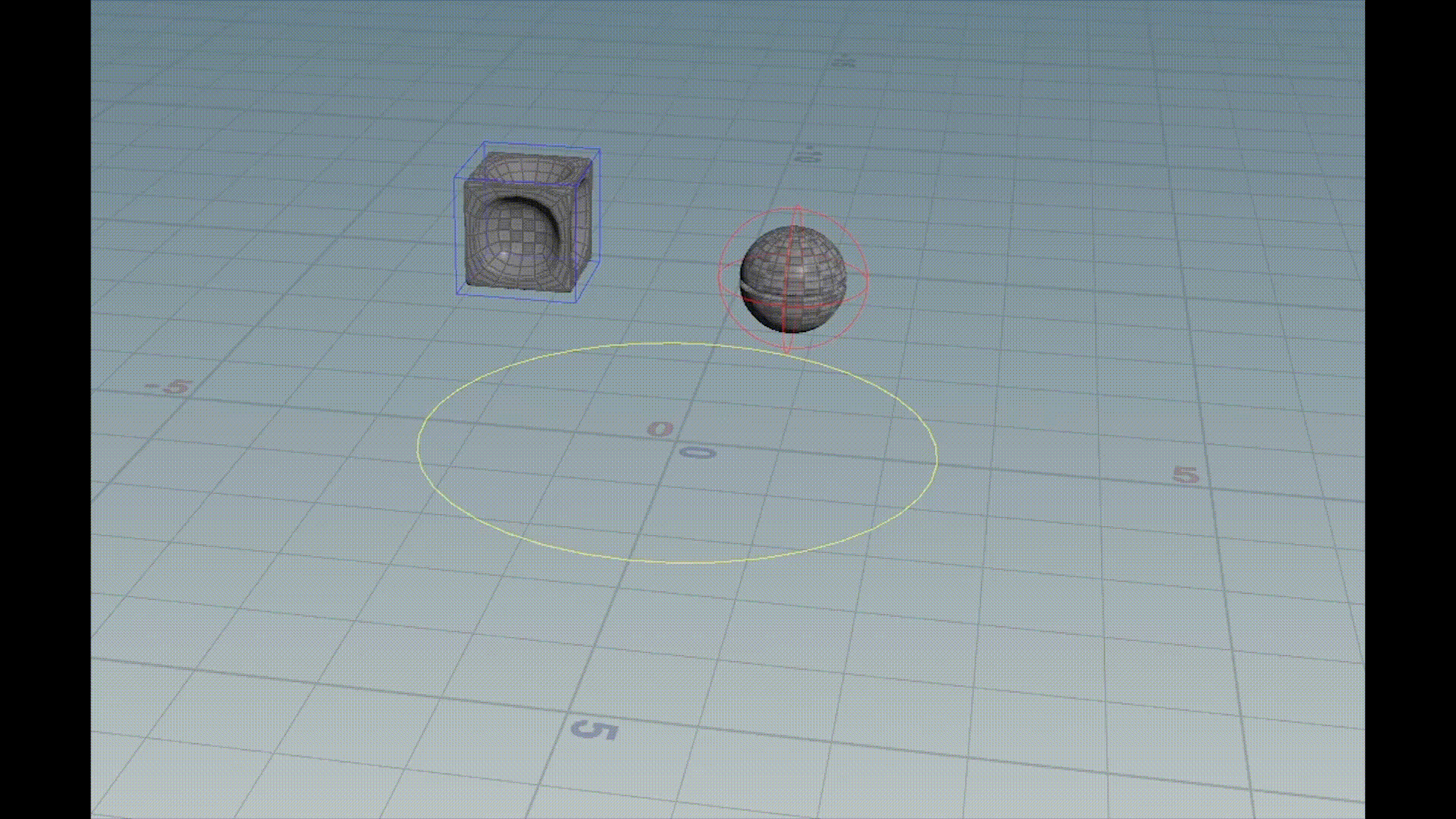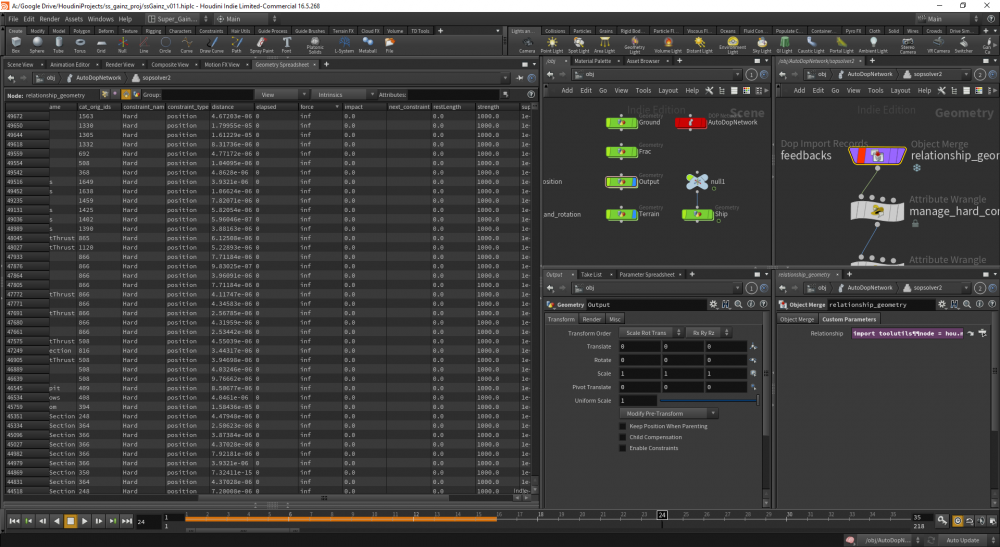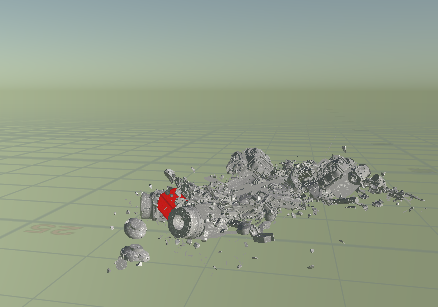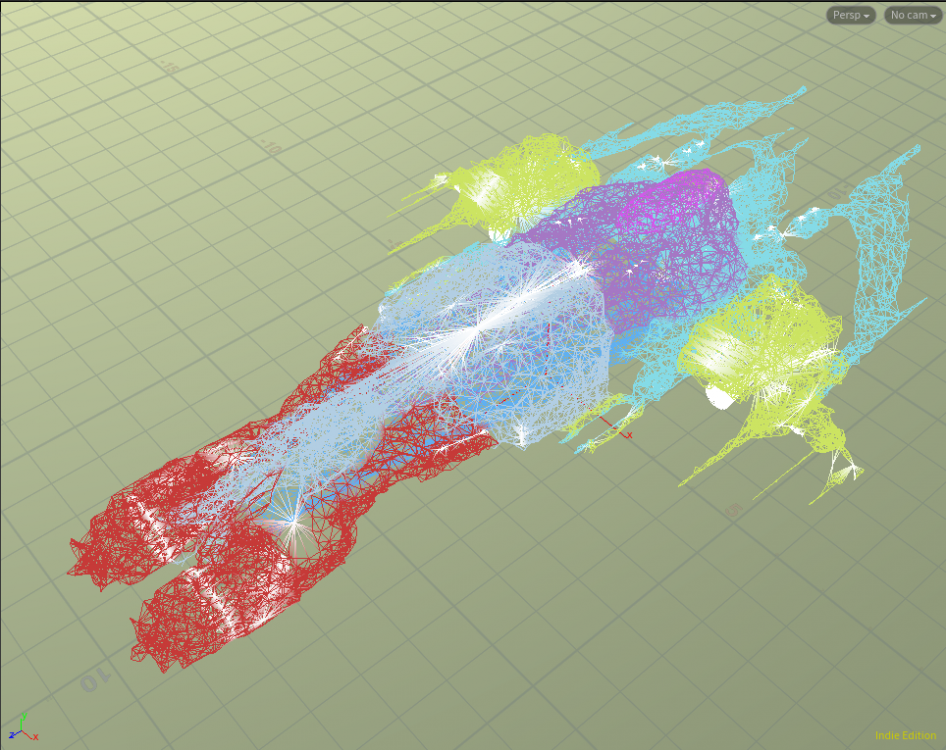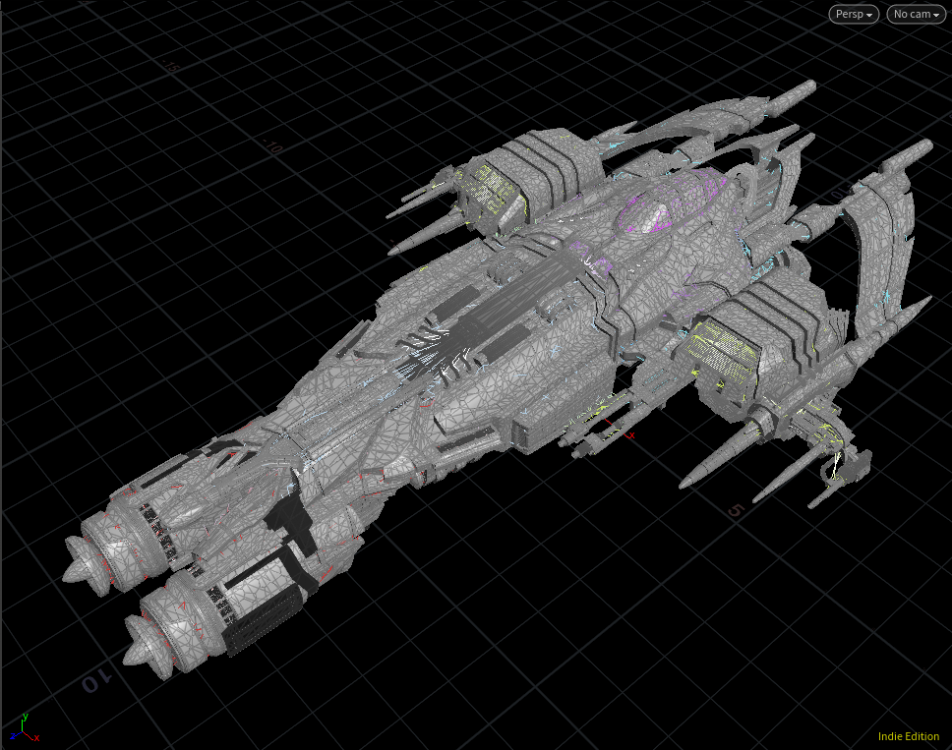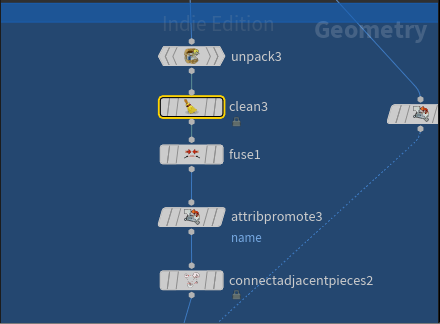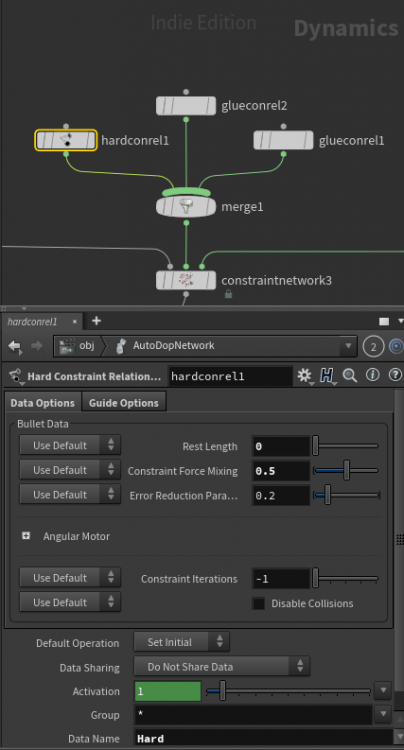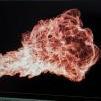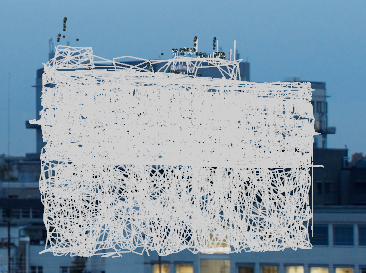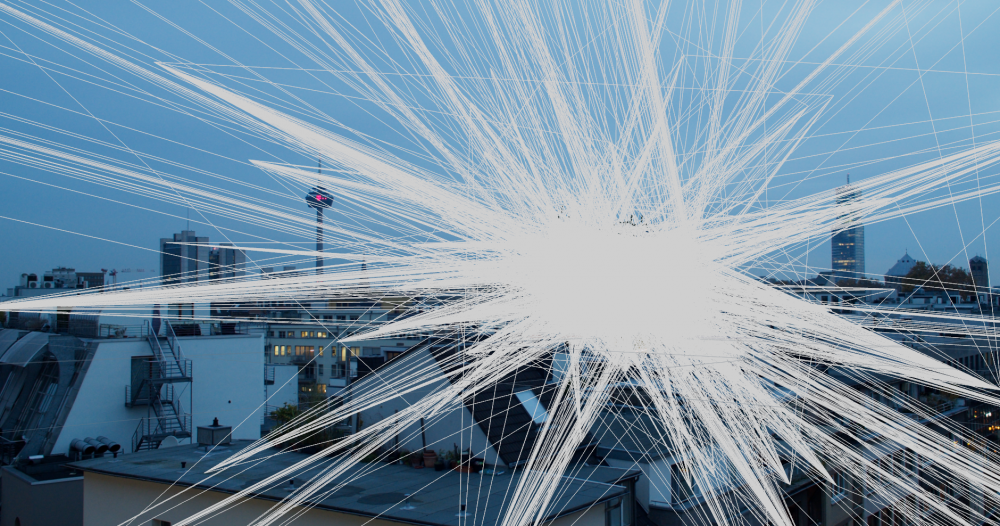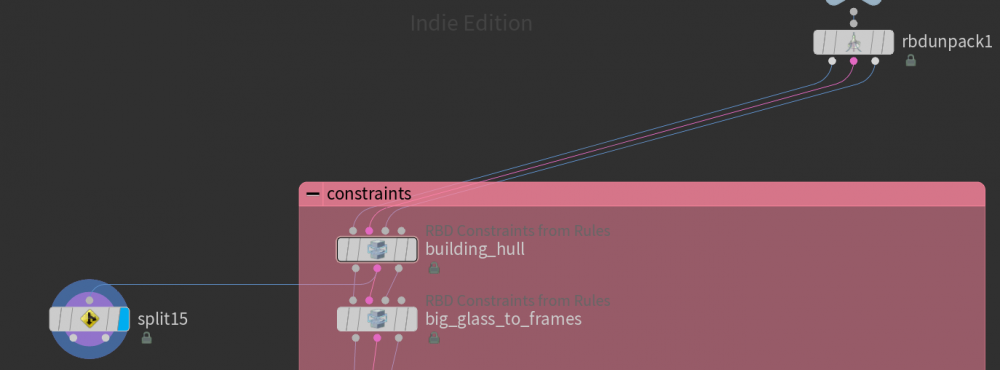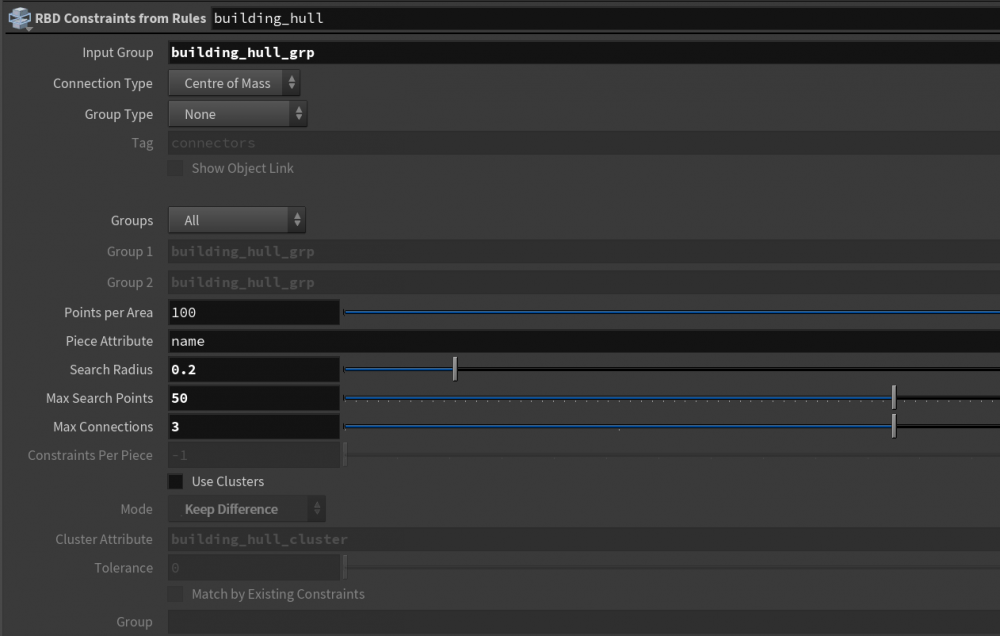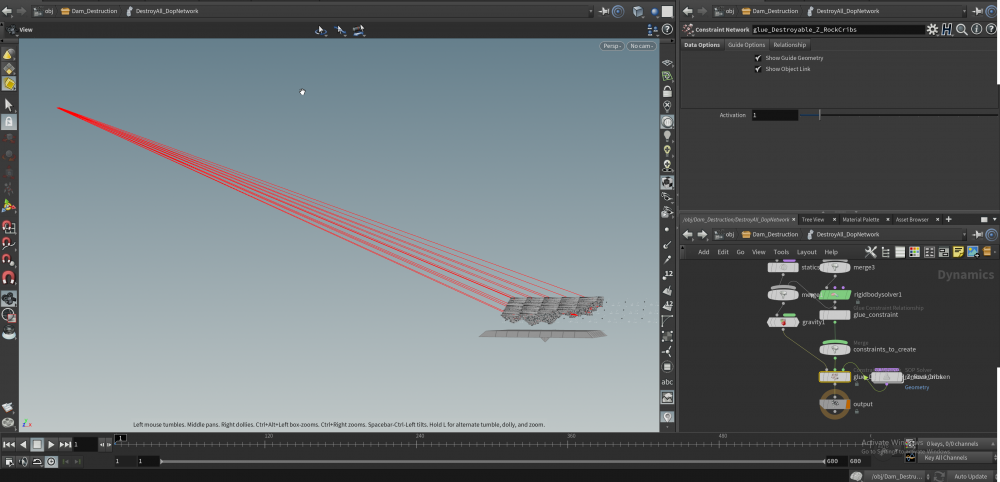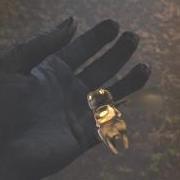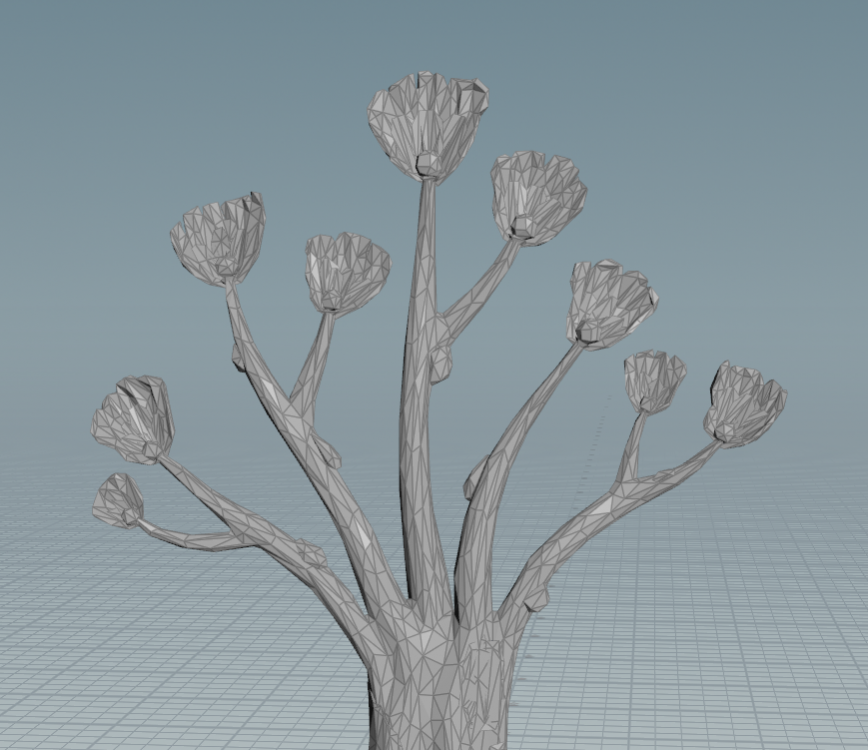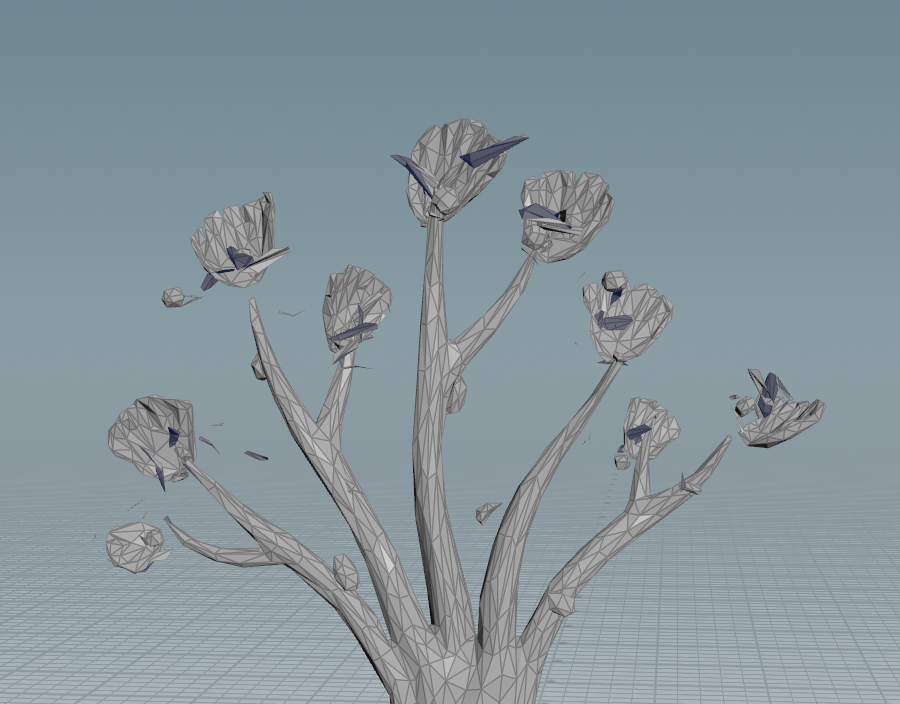Search the Community
Showing results for tags 'constraints'.
-
Hi everyone, In a rigid-body simulation, I'd like to break constraints if the RBDs go above 1.5 in the Y position (i.e., @P.y > 1.5). I've added a SOP Solver to the last input of the Constraint Network DOP, but I'm not sure how to access the Y position of the RBDs inside the solver. Any ideas on how to reference the RBD positions correctly? Thanks in advance for your help!
-
delete constraints except for cluster by using bounding box
Kaito Ishikawa posted a topic in Effects
Hi. I want the building to collapse so I want to use the constraint box as a bounding box and remove it gradually. I would like to delete it, leaving the cluster(intracluster). However, specifying inside the bounding box will remove all constraints. I tried to remove constraints other than intracluster with a difference in color, but I couldn't figure it out. If you can successfully remove constraint, you can use other methods. I want to use rbd bullet solver. Here are the files in progress. Destruction_building1.zip Please tell me. thanks Kaito Ishikawa -
Hi, it is possible remove hair constraint manually? I need to cut rope in few places but I cant find how it works. Information only about weld constraints. Thanks! vellumHair.hipnc
- 3 replies
-
- constraints
- vellum
-
(and 1 more)
Tagged with:
-
Hello, I am studying muscle system, and prepared a setup with a cycle inplace walk animation for my creature. That way, everyhting worked fine. Next step i tried switching the old animation with a new one, running in space, much faster than before. The result now appears completely broken, seems like muscles cannot follow the bones promptly, they're remaining behind the bones and intersecting each other they are not able to deintersect. I just tried to: • increase the stiffness for muscle-to-bones and muscle-to-muscle constraints, in Properties Sop • remove all damping values, in Properties Sop • increase substep, in Solver • increase constraint iterations, in Solver • added velocity stiffness factor (fresh new property in 19.5.409), in Properties Sop • added velocity blend, in Properties Sop • enabled velocity blending, in Solver • increased velocity damping, in Solver None of them worked or gave acceptable results. Any tips on how can i fix it? Thanks Update: speeding the solver x2 faster seems to give better results, although still not perfect. Not sure this is the right path anyway.
-
Hello. I watched this tutorial video and created a spring simulation. Next to that I want to give Collision to the spring constraints so that they collide with other objects. Do you know of any way to do this?
-
- 1
-

-
- constraints
- dops
-
(and 1 more)
Tagged with:
-
Hey all I have question regarding a pretty simple DOPs setup that I just can't seem to get my head around... Basically I'm simulating soil and turf being torn up. I'm using Grains for the soil and Cloth for the turf. I'm happy with both material properties now. The issue i'm facing is bonding the two different objects... I know it should be easy but whatever I do, it seems as though the objects remain pinned to their start frame once constrained to one another in a DOP Net, resulting in odd "hanging" behaviour, where only the grains fall and leave the turf behind or vice/versa What I'm aiming for is two-way coupling of the turf (cloth) and soil (grains) sims I've attached a couple of images to demo my setup - as you can see, there's vellum constraints node set to “Attach to Geometry” the constraints node is referencing the Geometry SOP group “Grass” and Target SOP “Soil_Geo” + SOP Group “Soil” When looking at the constraints, after a while of playback, they appear pinned to an static “start frame”, rather than continuously updating geometry I know i'm super close to cracking it his but I just don’t know what small thing it is that I’m overlooking
-
- dops
- constraints
-
(and 1 more)
Tagged with:
-
In the attached scene I'm emiting vellum softbodies and I'm trying to create some stitch constraints dynamically (based on a distance threshold). For some mysterious reason it is not working and I can't really figure out why... vellum_emit_softbodies.hipnc
-
- vellum
- constraints
-
(and 2 more)
Tagged with:
-
I'm trying to get these two objects to move towards each other after they hit the ground. Blend solvers are being used to allow the objects to transition between their keyframed positions and dynamic states and I need to add an attractive force which is what the spring constraint is supposed to be for. If I plug it in and doing nothing to it outside of hooking up the constrained object and the goal object it works fine. However, I want to control the timing of it so it can work it into an animation. When I tried to keyframe the spring strength or activation parameters the constraint would stop working or not work properly. Result from keyframing the activation parameter. The objects do not pull towards each other, the constraint just keeps them in place. Node network Does anyone know why this is happening? Thanks in advance!
-
- dops
- rigid body
-
(and 7 more)
Tagged with:
-
Hi all, I've got a motion editing setup happening, but it gets really slow heavy at certain nodes. I was wondering if anyone here could have a look and point out any efficiency gains I could be making? I've been figuring out a workflow for doing motion editing (animation) of my mocap that gets transferred to a metahuman. (Because of issues I was having with Houdini'd retargetting, I ended up doing the basic retargetting in Maya. But I'm doing the motion editing in Houdini) It's all working well - Thanks to madebygeoff for getting me started - I have all the basics in there; fingers and posture correction. I've also got a constraint setup for locking/controlling the right hand. But when I start using it - by turning the blend from 0% - 100%, my framerate drops a great deal - The arm constraint is very heavy when I do use it. Hoping someone here could have a look and make a suggestion or two. I've attached my hip file, plus an example fbx to plug in to the top. 'cheers, Sim MotionEditing_TEST.hip seq_01_t3_Sup.fbx
- 1 reply
-
- rig
- constraints
-
(and 3 more)
Tagged with:
-
Hey there odforce! Right now I'm trying to do a destruction simulation on a spaceship that I made, and I'm running into a problem that I can't seem to figure out. If anyone is familiar with Steven Knipping's Rigids III, the general setup is based off his approach. Here's some quick info on what I'm doing: * I'm simulating the spaceship destruction with bullet/packed primitives * These packed prims are a mixture between voronoi shattered pieces and unshattered geo pieces * Even when the spaceship is standing still, forces on the constraint prims will reach infinity once simulation begins * In DOPS, I've made a SOP solver that breaks my hard constraints once it reaches a certain force threshold, and since things are reaching infinity, it's basically just destroying all my hard constraints within a few frames Here's the ship: Here's the constraints using connect adjacent pieces from surface points with default values: After a few frames of simulation, it turns to dust =/ In dops, force is shown to reach inf and breaks the constraints based off my attrib wrangle which says... f@superHighNum = 100000000; if(f@force > f@cat_hard_break_force && f@cat_hard_break_force < f@superHighNum){ @group_broken = 1; } where f@cat_hard_break_force is the force threshold that I define I tried countering this behavior by adding the f@superHighNum, but it looks like forces gradually reach infinity, so it still breaks... Has anyone encountered this sort of issue before? If so, what might cause these forces to reach infinity? Here's a few things I've tried: * Cleaning up the mesh and fusing points before connect adjacent pieces * Setting rest length to zero * Blasting funky looking constraints before simulation * Trying a bunch of different settings on connect adjacent pieces when generating the constraints * Simulating with glue constraints to see if forces still reached inf (they do not reach infinity with glue) * Increasing the constraint force mixing parameter * The RBD physical properties are at default values Also be sure to check out Steven's tutorials because they're really awesome. I couldn't find his e-mail to ask about it, but perhaps you guys might have some ideas? Any thoughts, theories, ideas, would be greatly appreciated, thank you for your time! - Tyler ssGainz_v011.hiplc
- 3 replies
-
- rigid bodies
- constraints
-
(and 2 more)
Tagged with:
-
Hi all,I am making a ground breaking effect in which a stone comes out of the ground and making primary debris and all.The condition is I also required to bring soil and ground dirt during eruptions I have managed to use the vellum grains to solve this, along I have used the "attach to geometry" constraints to make the vellum grains stick to the broken pieces. But now I also want during the collapse and hit on ground once the pieces fall on ground and make an impact ,some amount of dirt should also left on floor due to the impact. I can do this while playing with the breaking threshold but its not on per Debri I want to customize it so only some pieces would leave dirt rest not all. If anybody wants a file I can share too.
-
Hi all,I am making a ground breaking effect in which a stone comes out of the ground and making primary debris and all.The condition is I also required to bring soil and ground dirt during eruptions I have managed to use the vellum grains to solve this, along I have used the "attach to geometry" constraints to make the vellum grains stick to the broken pieces. But now I also want during the collapse and hit on ground once the pieces fall on ground and make an impact ,some amount of dirt should also left on floor due to the impact. I can do this while playing with the breaking threshold but its not on per Debri I want to customize it so only some pieces would leave dirt rest not all. If anybody wants a file I can share too.
-
Hey all, trying to have constraints attach to geo in vellum to follow a sphere, all works, but then tried to rivet it to a moving character and vellum sees the sphere at 0,0,0, not where its riveted. Cheers!
-
I would like to delete vellum grains and their constraints so that I can pump more grains into the scene. This is something I've been struggling with for quite a while and all the tutorials I found do not seem to deal with constraints when deleting grains. I've simplified my setup to its bare minimum in the attached file. Any advice or relevant link would be much appreciated. Grain_Constraint_Delete.hip
-
Hey Guys. I was wondering if there is a way to delete particles in a Vellum simulations when they have had constraints? The scenario I have setup the particles have constraints, then I remove the constraints based on a condition, and when I try to remove the particle as well it craps out on me. Attached is a simple example file to showcase the issue.DeleteVellumParticlesWithConstraints.hiplc Thanks
- 5 replies
-
- vellum
- constraints
-
(and 1 more)
Tagged with:
-
Hi guys, I'm unfortunately pretty bad with RBDs. I'm wondering how you could quickly setup a two step fracture. Like having big chunks and the inidividual polygons of those chumks should be glued together again. Does anyone have a quick initial setup to show? Thanks in advance!
-
Hi all, Does anyone have a workflow for attaching fractured geometry of an animated alembic, to the animated alembic itself? For example, a moving vehicle that's animated to collide with something and continue moving (the whole sequence of how the vehicle moves is hand animated), so only some parts are fractured for the rbd simulation (like half of a plane's wing, some window glass, parts of the nose fly off), but the rest of the parts that aren't affected are animated via the alembic to continue moving. I've tried attaching the constraints to the timeshifted alembic geo, then use transform pieces for animating the static objects, but i think my constraints are invulnerable right now? They don't break and no forces can affect them, even if i set my strength values to 1. I wish i could send an example file but i'm troubleshooting for work, so i can't actually do so. Any help or hints would be greatly appreciated, and thank you anyone for taking the time to read.
- 4 replies
-
- fracturing
- h18
-
(and 2 more)
Tagged with:
-
I wonder how to import RBD constraint SOPs inside DOPNetwork ? for example RBD constraint line.
-
Hi, I made some RBDs some are broken via RBD Material fracture and some I broke with boolean fracture. All have constraints and it looks good (picture a), but when I use a RBD constraints from Rules node the constraints looks crazy (picture b). So the animation looks like the parts are not really free and the broken parts are not flying away but hangs around the area as they would be bound to something. I think it is the matter of constraints. Can anybody give me a hint how to solve this problem? Thanks a lot! D.
-
Hello masters! I know this probably is a noob question, but my guide geometry for a fractured geo all appear to point to a distant pivot point, probably a modeling mistake i did... Is there a way to correct this easily, or i would be better off re-modeling my initial geo ? Thanks for any help !
- 4 replies
-
- glue
- constraints
-
(and 1 more)
Tagged with:
-
Hello all! I have been trying to figure out how to dynamically update the constraints in a vellum constraints property node based off of the distance of the vellum object from a given point in space, but I cant figure out how to make this calculation dynamically in this context. I can measure the distance before and after the vellum solver with a distance node but they only give me static values in the solver context so I dont know how far things are once theyve moved. Havent been able to get xyzdist to work either. Any help would be greatly appreciated as this project is very important to me!!
-
Hi, I wanted to ask about some of the hidden intricacies of vellum pressure. In particular I recently found out about the @pressuregradient attribute that determines the direction in which the object expands as pressure is applied. I wonder: How is it determined? I suspect something to do with Normals, but then when I visualise the attribute it tends to always have a rough relationship with {0,0,0} - why? This leads to strange inflation especially if an object is off-center and then it trends away from the origin, as opposed to away from its center of mass... Can it be manipulated in the solver? It would be nice to procedurally predetermine the inflate direction, although I'm not sure how to access or manipulate this attribute. Can it be manipulated per frame? If I have multiple objects that start in a rest position and their inflations happen one after another - one ball moves other balls out of rest position for example... Then once the ball that has already been moved starts to inflate, is it computing on the pressure attribute given at the start of the solve, or the one at it's current frame number? I could probably word these questions better and I do apologise, but at the moment it seems I have run out of places/videos to read/listen to. Thanks a lot for your help! Cheers.
-
Hi everyone! I'm trying to do a wind effect on this tree which has separated geos in grp. I imported as fbx and made a vellum configure soft body with a POPwind attached to the solver. but when I start playing the separate geos breaks(of course?). How can I make them stay in place? I'm using houdini 17.5
-
Hey all! I was hoping to get some help figuring out a way to update the stiffness value of a vellum constraint geometry across the frames of its simulation. I can write an attribute wrangle like the one pictured and it will update the starting frame and the simulation bakes from there and plays as though the values werent changing at all, much less becoming negative. I tried dropping into the vellum solver and seeing if I could figure out anything in there but nothing seemed to work. Im still pretty new to houdini so I expect it to take some time but I was hoping to eventually take whats done in these two awesome videos and merge them into a project where a genetic algorithm produces tensegrities that update their stiffness over simulated time in order to deform in ways that cause them to (hopefully) roll towards a target. Hip file of the simplest version of the problem is attached in case it helps! Thanks for reading!!! VellumConstraintsHelp.hipnc
-
- vellum
- constraints
- (and 7 more)
-
Hi, I'm quiet new in this big world of Houdini, i need help. The project consists of creating spheres on the points extracted from a pop simulation and then destroying them. The problem I encounter is that when I put the glue on different spheres it seems that it creates the glue on all the broken pieces. It could be the fact that in the assemble node, it considers those points as a single geometry, but I don't know how to divide those points as unique entities and then apply the glue only on the individual spheres and not on all of them as a single object. Thank you in advance for your attention and any help. I attach the file below. Thanks a lot! Fra_pop_copysphere_and_rbd_.hipnc
- 2 replies
-
- glue
- constraints
-
(and 6 more)
Tagged with:

